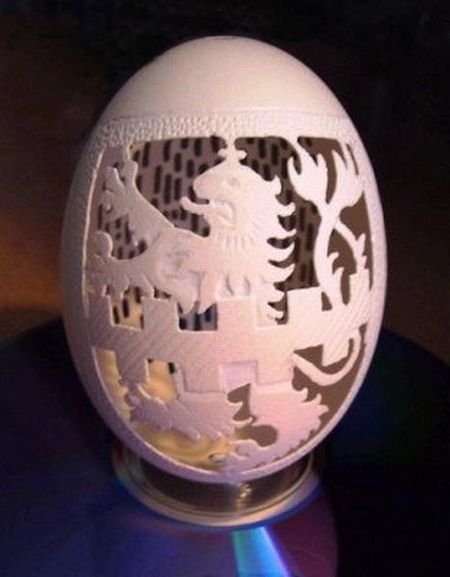|
|
Egg Shell Art
|
Skill and craft
Art can connote a sense of trained ability or mastery of a medium. Art can also simply refer to the developed and efficient use of a language to convey meaning with immediacy and or depth. Art is an act of expressing feelings, thoughts, and observations. There is an understanding that is reached with the material as a result of handling it, which facilitates one's thought processes.
A common view is that the epithet "art", particular in its elevated sense, requires a certain level of creative expertise by the artist, whether this be a demonstration of technical ability or an originality in stylistic approach such as in the plays of Shakespeare, or a combination of these two. Traditionally skill of execution was viewed as a quality inseparable from art and thus necessary for its success; for Leonardo da Vinci, art, neither more nor less than his other endeavors, was a manifestation of skill. Rembrandt's work, now praised for its ephemeral virtues, was most admired by his contemporaries for its virtuosity. At the turn of the 20th century, the adroit performances of John Singer Sargent were alternately admired and viewed with skepticism for their manual fluency, yet at nearly the same time the artist who would become the era's most recognized and peripatetic iconoclast, Pablo Picasso, was completing a traditional academic training at which he excelled.
A common contemporary criticism of some modern art occurs along the lines of objecting to the apparent lack of skill or ability required in the production of the artistic object. In conceptual art, Marcel Duchamp's "Fountain" is among the first examples of pieces wherein the artist used found objects ("ready-made") and exercised no traditionally recognised set of skills. Tracey Emin's My Bed, or Damien Hirst's The Physical Impossibility of Death in the Mind of Someone Living follow this example and also manipulate the mass media. Emin slept (and engaged in other activities) in her bed before placing the result in a gallery as work of art. Hirst came up with the conceptual design for the artwork but has left most of the eventual creation of many works to employed artisans. Hirst's celebrity is founded entirely on his ability to produce shocking concepts. The actual production in many conceptual and contemporary works of art is a matter of assembly of found objects. However there are many modernist and contemporary artists who continue to excel in the skills of drawing and painting and in creating hands-on works of art.
|
|









